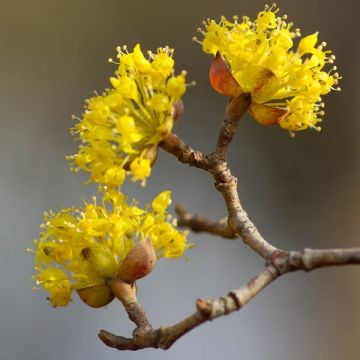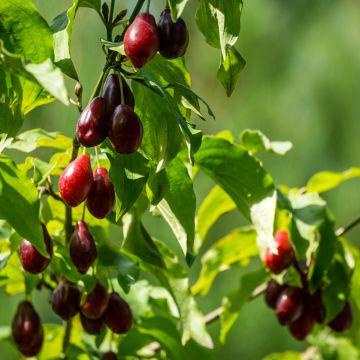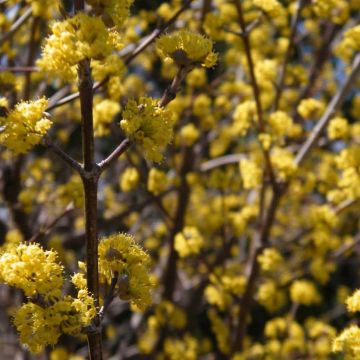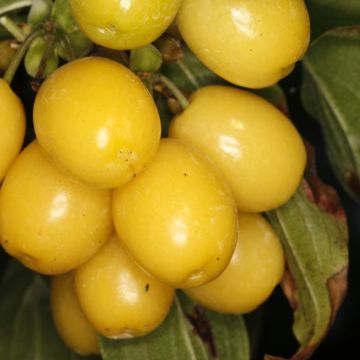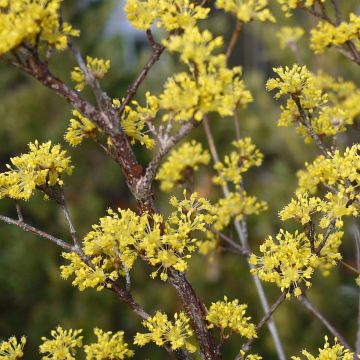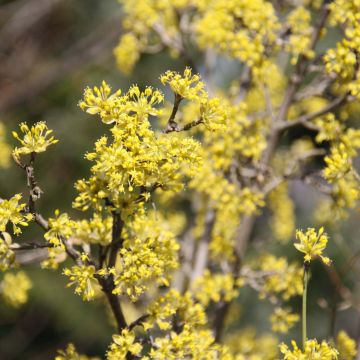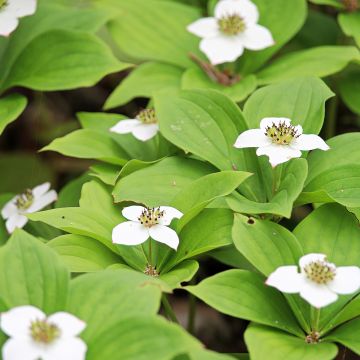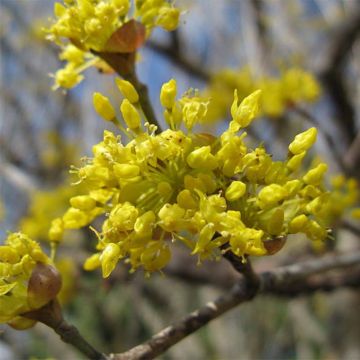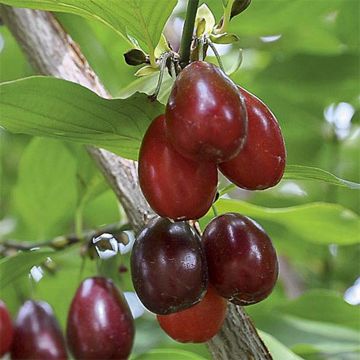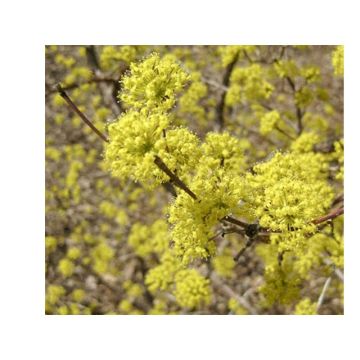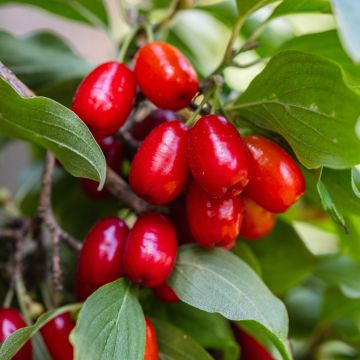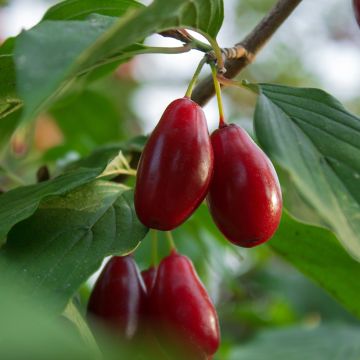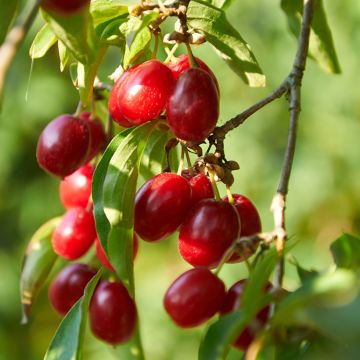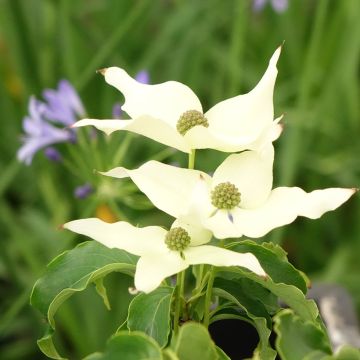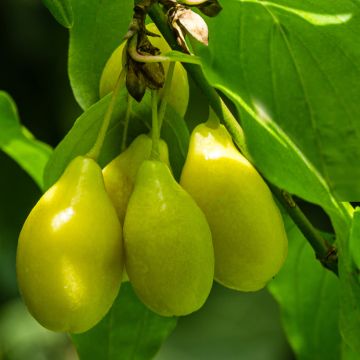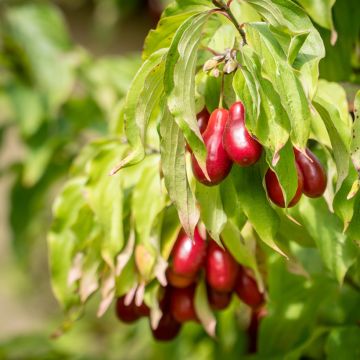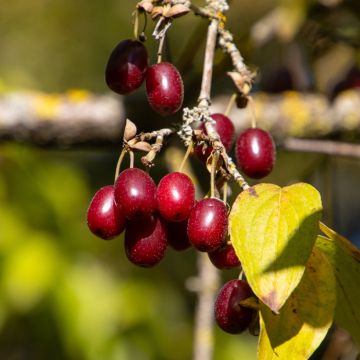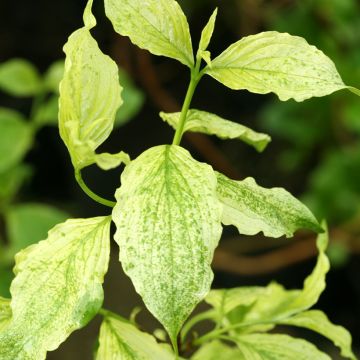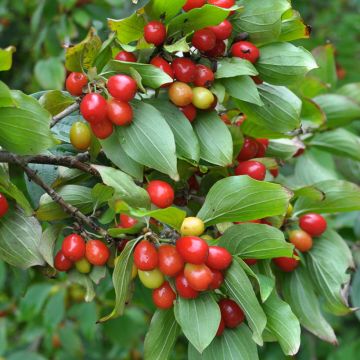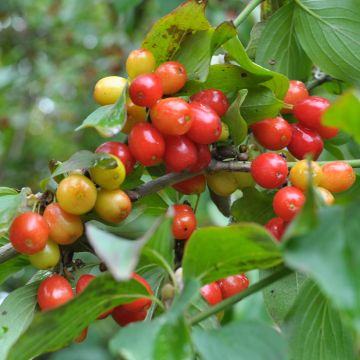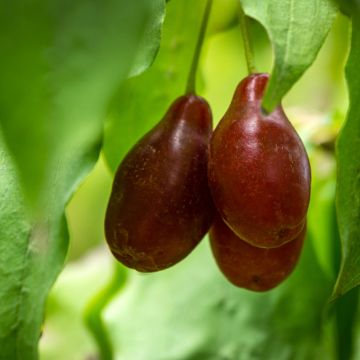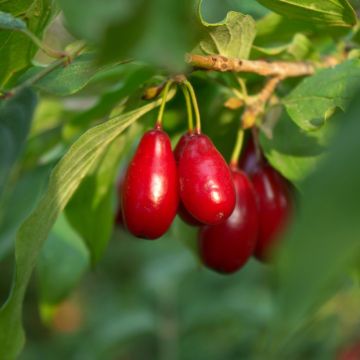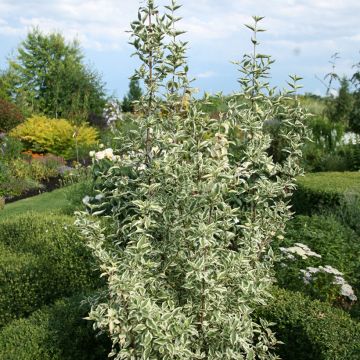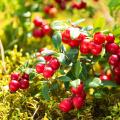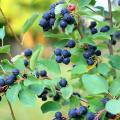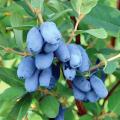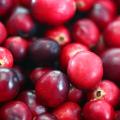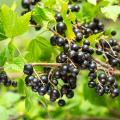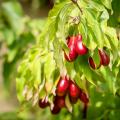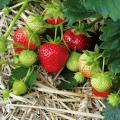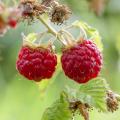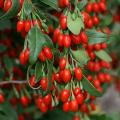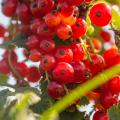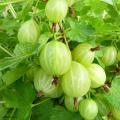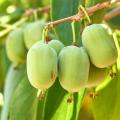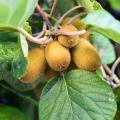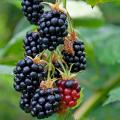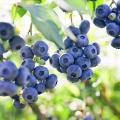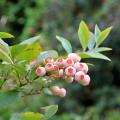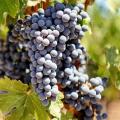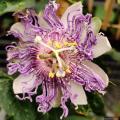Fruiting Dogwoods
Does this plant fit my garden? Set up your Plantfit profile →
Available in 6 sizes
Available in 1 sizes
Available in 1 sizes
Available in 1 sizes
Available in 1 sizes
Available in 2 sizes
Available in 2 sizes
Available in 2 sizes
Available in 1 sizes
Available in 1 sizes
Available in 1 sizes
Available in 1 sizes
Available in 1 sizes
Available in 1 sizes
Available in 1 sizes
Available in 1 sizes
Available in 1 sizes
Available in 1 sizes
Available in 1 sizes
Available in 1 sizes
Available in 1 sizes
Available in 1 sizes
Available in 1 sizes
Our range of Berry Bushes, Cornus that produce small edible fruits, tasty, often red or yellow, rich in vitamin C. The most famous is the European Cornel Bush, or Cornus mas, appreciated for its tangy red fruits, used in jams, syrups, or fresh. The Japanese Cornelian Cherry (Cornus officinalis) resembles it a lot. The Cornus mas has given several cultivars such as 'Jolico' which produces large red fruits, perfect for jams. 'Juliusz' is an interesting variety for its small-stoned red fruits, with a tangy flavour, ripening in late August. The Austrian variety 'Schönbrunner Gourmet Dirndl' produces many red fruits with a sweet flavour, from the end of August. The Japanese Dogwood Cornus kousa produces globose red fruits in late summer, sweet and slightly granulose, used raw or in compote. The variety 'Big Apple' is known for its large fruits. Much less known, the Canadian Berry Bush is a perennial ground cover that produces small edible red berries in autumn. Cross-pollination between several individuals improves the fruiting of berry bushes.
To learn more, also check out our feature "Growing the European Cornel Bush for its fruits"
Haven't found what you were looking for?

































